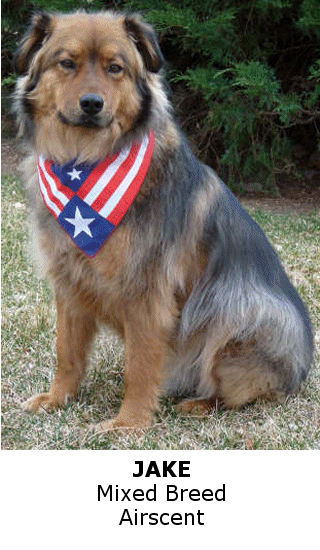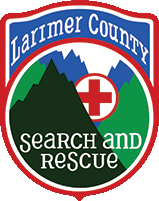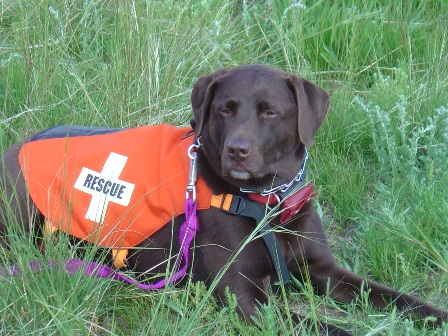Search and Rescue Dogs

LCSAR's search dogs are scent discriminating trained in air or trailing techniques.
Air scent dogs detect scent particles that are carried in the wind from the missing person's location. Several air scent dogs can be used on a mission to search many different areas at the same time.
Trailing dogs follow the trail of scent particles that were shed by the missing person as they walked. The scent trail is affected by wind and other weather conditions so the dog may not follow the person's exact footsteps. Rather, the trailing dog may work parallel to the path the individual actually walked.
All LCSAR search dogs are trained to scent discriminate. This means the dogs will ignore the scent of everyone except for the missing person. An article of clothing recently worn by the missing person is presented to the dog and the dog then searches only for the person with the matching scent. Good scent articles are items worn close to the skin, made of natural fibers, and not touched by anyone other than the missing party.
LCSAR's search dogs are also trained
- to search bodies of water for drowning victims
- to search avalanche debris for buried victims
- to search for evidence
- to search for trapped victims in disaster situations
Dog and handler teams typically train a minimum of two years prior to demonstrating they can meet the standards through a rigorous testing process.
A trailing dog is expected to be able to follow a trail which is 24 hours old prior to testing. As a part of the testing process, the dog and handler team work a trail that is 1.5 to 2 miles long. The trail is laid the day before the test and is contaminated with the scent of other people.
An air scent dog and handler team demonstrate their skills in three separate tests. They search a large area (1 mile square) demonstrating an efficient strategy, they search at night, and they search for multiple lost persons at the same time.
The search dogs are just one of the many tools used by the search management to find clues of the missing person's whereabouts. Dogs can be used to rule out areas (the dogs gave no indication that the person is in a given area), dogs can indicate a general direction for the search manager to send other search resources, and the dog teams are sometimes the team that actually finds the missing person.




